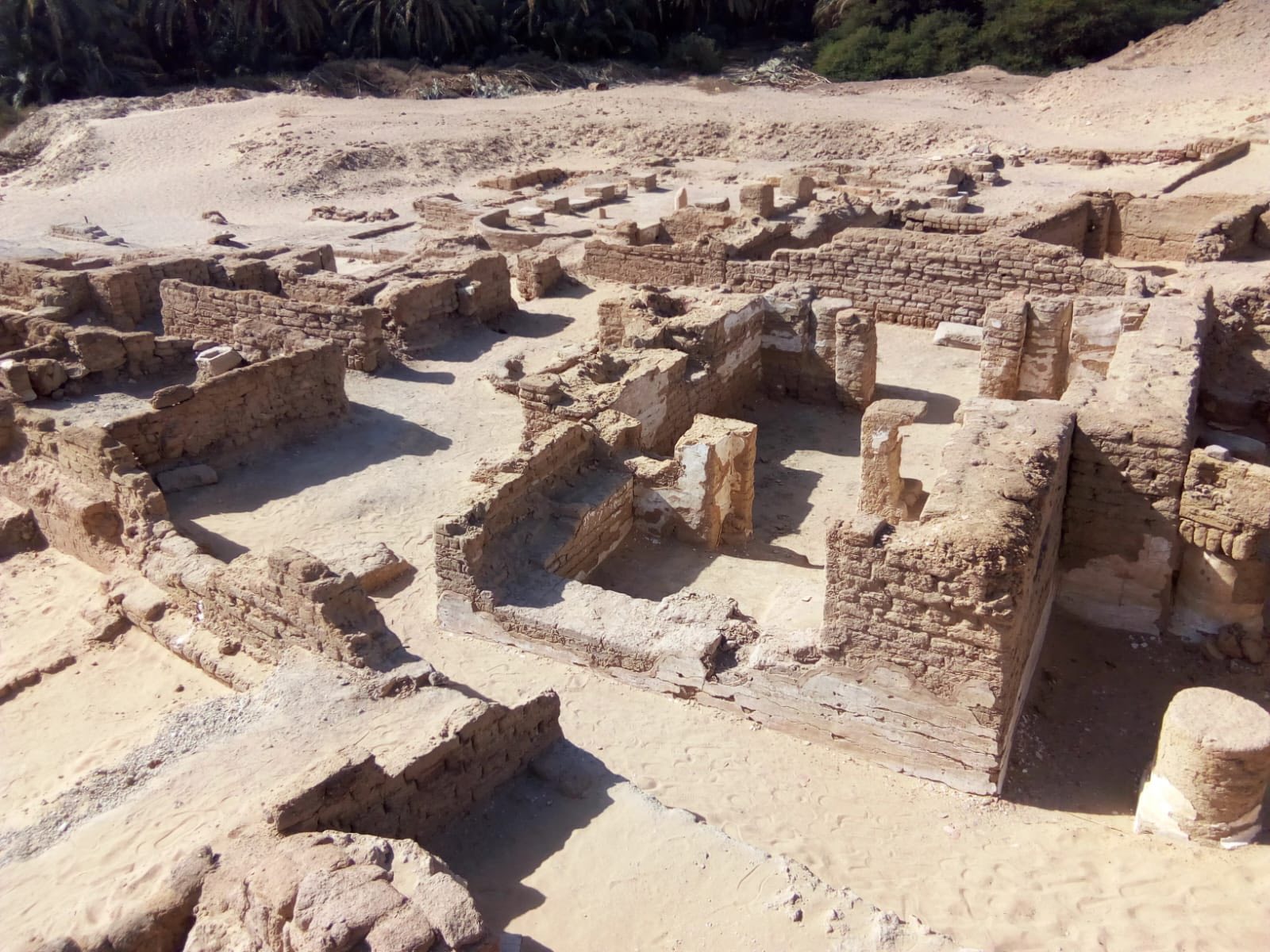An Egyptian archaeological mission has uncovered the remains of a residential city dating back to the early Coptic period at Ain al-Kharab in Egypt’s Western Desert, the Ministry of Tourism and Antiquities announced on 24 July.
Located in the Kharga Oasis within the Islamic and Coptic archaeological zone of the New Valley Governorate, the city offers insight into a pivotal chapter of Egypt’s history. During the Ptolemaic and early Roman periods (3rd century BC to 2nd century AD), the site was part of a settlement where polytheistic traditions prevailed. In the centuries that followed, it became a center of early Christian life, reflecting the region’s gradual shift from paganism to Christianity.
The mission, affiliated with the Supreme Council of Antiquities (SCA), uncovered the remains of residential structures, tombs, churches, and a mural depicting Jesus Christ healing the sick.
According to Minister of Tourism and Antiquities Sherif Fathy, the discovery reflects the diversity of Egypt’s ancient civilization and its capacity for religious and cultural transformation. “This find enhances our understanding of early Christianity in Egypt and underscores the values of tolerance deeply embedded in our heritage,” he said.
Mohamed Ismail Khaled, Secretary-General of the SCA, described the discovery as a significant addition to ongoing research on Egypt’s western oases. “The findings confirm the Kharga Oasis’s importance as a religious and social centre across various historical periods, especially at the beginning of the Coptic era,” he said.
The unearthed remains include mudbrick homes, many with plastered walls and storage areas, some containing large clay jars once used to store grain and food. Archaeologists also found ovens for daily use, pottery fragments, ostraca, glass and stone artefacts, and human burials.
Among the most prominent features are two churches. One is a large basilica-style structure composed of a central hall flanked by two aisles, with three rows of square columns. Service buildings were found on its southern side.
The second church is smaller and rectangular, with remnants of seven exterior columns and Coptic inscriptions still visible on parts of its interior walls. Additional service facilities were discovered to the west of the site.
Siham Ismail, Director General of Antiquities in Kharga and head of the mission, noted that the site had been used across multiple eras. Structures originally built during the Roman period were later adapted for use during the early Coptic and Islamic periods, pointing to the region’s long-standing role as a hub of continuity and change.
The excavation is part of wider efforts to support archaeological work across Egypt and deepen public knowledge of the country’s diverse heritage.







Comments (0)